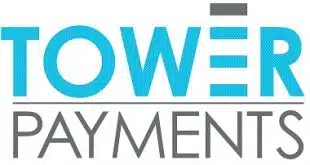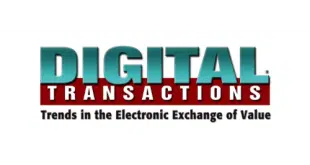Public-transportation agencies increasingly are turning to mobile-ticketing apps to attract riders and lower fare expenses.
Mass-transit riders once read newspapers as they commuted to work. But hop on any commuter train, subway, or bus nowadays and you’re more likely to see passengers using smart phones to read news reports, listen to music, send text messages, or do other stuff while enjoying their freedom from the task of driving.
According to the Pew Research Center, 68% of U.S. adults carried a smart phone in 2015, up from 35% in 2011. In other words, more than two-thirds of Americans now have a computer in their pocket.
Given that fact, a growing number of public-transportation agencies are offering or planning mobile apps that include not just the schedules, trip planners, and maps found in early versions of such apps, but also ticketing and payments options.
According to a report in the urban-planning portal Planetizen.com, as of November 2015 some 13 mobile-transit payment services had launched or were scheduled to launch within a year, including in Atlanta, Los Angeles, and Washington, D.C.
The newest members of the mobile-app club include the San Francisco Municipal Transportation Agency and the Chicago area’s Ventra fare-payment system, which now has utility on the vast Metra commuter-rail network.
Apps are in the works for commuter-rail lines in Boston, and New York Gov. Andrew Cuomo in January announced that mobile payments would be coming to the Long Island Rail Road and Metro-North lines.
“It absolutely flows from that—the riders are doing everything by their phone,” says a spokesperson for Portland, Ore.-based GlobeSherpa, one of a handful of specialty application developers serving the mass-transit fare market.
Micah Bergdale, chief executive of another vendor in the transit niche, New York City-based Bytemark Inc., says mobile apps are not only an inexpensive fare-payment option, but a way for agencies to attract young adults—the riders of the future—who already are comfortable using Uber or Lyft mobile apps to get and pay for rides.
“Honestly, it’s really the opportunity to be drawing new riders,” he says. “They [agencies] want to be able to engage those younger people.”
Headwinds
Citing industry statistics, Bergdale adds that cash can cost an agency 15 cents per dollar of fare revenue in processing expenses compared with 8 cents per dollar for a smart card. But according to Bytemark’s internal data, a mobile transit payment costs only 4% to 5% of revenue, depending on the agency’s volume.
While transit apps can be cool for riders and attractive for agencies from both a marketing and financial standpoint, for the foreseeable future they will be a supplement to rather than a replacement for existing fare-payment systems.
These systems may accept the old and new, everything from cash to paper tickets with magnetic stripes to proprietary smart cards. Even tokens live on, at least in Philadelphia. Many agencies have upgraded their fare systems in recent years, and some accept contactless general-purpose payment cards (“Transit’s New Payment Routes,” July, 2014).
“We don’t view mobile as a replacement for cash,” says the GlobeSherpa spokesperson. “It’s not realistic to do that. You’ve got regulations that require agencies to take a multitude of fare-payment options.”
And few transit experts expect mobile apps will solve any of public transportation’s bigger problems, including chronic shortages of sufficient capital for system maintenance and expansion as well as the American public’s proclivity for cars.
According to the U.S. Census Bureau, only 5.2% of workers took public transportation to work in 2013 compared with 76.4% who drove alone.
Transit’s share of commutes is virtually unchanged from 1990, and down by more than half from 1960, when, according to Census Bureau data, it was 12.1% and more people and jobs were located in dense central cities where transit is most financially viable.
Against those headwinds, however, mobile apps and payments could move the commuting needle at least a little bit in transit’s direction, particularly because many young adults today are forsaking driving and living in apartments and condos near tech jobs in the city rather than houses in far-out suburbs.
“I predict you’ll see a lot more of this,” Martin Schroeder, chief technology officer of the Washington, D.C.-based American Public Transportation Association, says of mobile-fare apps.
Simplifying the Process
Adding a ticketing app to the fare menu, however, requires the agency to sort through numerous technological and operational issues.
One of the most important is how a ticket will be presented. Many agencies opt for so-called visual validation, in which a conductor or driver confirms that the screen’s electronic ticket is indeed valid through the timely display of colors, graphics, and other expected cues. But there are other options, including barcodes and quick-response (QR) codes.
A full-featured fare app also must make paying for a pass or ticket easy for the rider. Behind the scenes, it must connect easily with the merchant acquirer and other processors linked in the payments chain.
Bytemark, which won a contract last July to supply a mobile app for the Toronto Transit Commission, North America’s third-largest transit agency, claims that it’s the only vendor in the transit space that has a gateway certified by Visa and MasterCard as compliant with the Payment Card Industry data-security standard.
With that, Bytemark can link with any merchant acquirer without needing one-on-one tie-ins. Clients include such big acquirers as Chase Paymentech, Bank of America Merchant Services, and Elavon, Bergdale says.
“That’s one way we differentiate ourselves,” he says. “We wanted to take one step out of the process.”
Transit agencies are encountering a dizzying array of technologies for transferring data between the fare gate or terminal, and the mobile phone.
Beyond QR or bar codes, there’s near-field communication (NFC), a powerful short-range radio technology that after years of slow development finally is finding its way into mobile phones, including the latest Apple iPhone and Samsung models. That’s encouraging for transit agencies, because NFC can facilitate exactly what they want—fast contactless transactions.
“It’s coming in big, more than half of smart phones now are equipped with NFC,” says APTA’s Schroeder.
NFC payments would not require changes in the gates of systems equipped to accept contactless credit and debit cards. Trouble is, there aren’t yet very many such systems in the U.S., but more are coming.
The most prominent example is the Chicago Transit Authority’s heavy rail and bus network, which uses the Ventra fare system developed by Cubic Transportation Systems.
“The reason people go to contactless card systems is because of volume and security,” says David deKozan, vice president of new market development at San Diego-based Cubic, which has developed fare systems for large transit agencies throughout the world.
Still other mobile technologies with potential for transit include host card emulation, a cloud-based variant of NFC, and Bluetooth low energy (BLE), according to Schroeder.
“A lot of things are appearing in the market,” Schroeder says. “It’s a complicated assessment of which to use.”
‘Dynamic Security’
Transit officials agree that mobile-ticketing apps and payments can involve complicated assessments, but they’re under pressure from riders and politicians to upgrade aging fare systems. Here are some examples of what three agencies have done with mobile apps:
Chicago
Developed by Globe?Sherpa, a Cubic subcontractor, at a cost of $2.5 million, the Ventra mobile app has been downloaded more than 200,000 times since its November 2015 introduction, according to a CTA spokesperson.
The Ventra system itself is centered around a prepaid MasterCard that doubles as a fare-payment pass on the CTA and the Pace suburban bus system. In addition to giving information about schedules, arrival times and other non-payment functions, the new app enables CTA and Pace riders to load balances and passes into their Ventra accounts.
Those same accounts can now be used to buy passes on the Chicago area’s third major transit agency, the Metra rail system. On board, the phone-displayed ticket has all of the information that a paper ticket does, as well as changeable elements that let the conductor know it is valid at the time presented. “There’s a lot of dynamic security,” says deKozan.
The electronic tickets also have a barcode icon that can be activated for additional validation, but Metra has not yet decided to use that feature.
Eventually, the mobile app will partially solve a big problem presented by the balkanized nature of the Chicago transit system—enabling riders to use one ticket type on any bus or train operated by the three agencies.
Dallas
The Dallas Area Rapid Transit system rolled out its GoPass mobile app in 2013 for DART and two smaller transit agencies in the Dallas-Fort Worth area. Developed by Copenhagen, Denmark-based Unwire Group, the app has been downloaded nearly 500,000 times and has accounted for 2.5 million ticket sales, according to a DART spokesperson.
The app displays a visually validated ticket that changes colors when activated. It also can produce a QR code by tapping on a symbol, but officials typically forgo QR codes when a bus or train is crowded.
“Day in, day out, probably just under 15% to 20% of all tickets sold are sold through GoPass,” the spokesperson says. “Generally we’re pleased with the mix; we think that will continue to grow as smart-phone penetration continues to grow.”
DART has done joint promotions with local attractions, such as the Dallas Zoo, through the app. Beyond just mobile payments, DART in October picked Melbourne, Australia-based Vix Technologies to develop a fare system that allows payments by NFC-enabled smart phones, agency-issued or third-party transit cards, or EMV contactless cards.
“That will happen over the next couple of years; we’re really working to get away from paper passes,” the spokesperson says. “We also think we’ll see continued movement away from cash as we go to a contactless system. More and more customers … are used to using non-cash payment systems.”
Northern Indiana
The Chesterton-based Northern Indiana Commuter Transportation District launched a Bytemark-developed mobile app in 2014 for riders of its South Shore electric interurban line between Chicago and South Bend, Ind. Now the app, which displays a visually validated ticket, accounts for nearly 15% of revenues, says Boris Matakovic, the district’s chief information officer.
“It’s definitely been steadily growing,” says Matakovic.
Just like adding new rail lines or replacing a bus fleet can take years, adding new fare options such as mobile payments also takes time, Matakovic says. He notes that “when we introduced credit card [accepting] ticket machines, it took a few years for people to get used to it.” Now, however, “the ticket machines are where we get most of our revenues.”
In the future, mobile apps are likely to lose their novelty but have a more prominent place in transit payments, along with contactless media. And, yes, cash.




